Eat like a nutritionist—13 foods health experts can't live without
Keep these approved foods in your refrigerator.

Eating healthy can sometimes be challenging, especially when you’re crunched for time or tired after a long day. Instead of opening your refrigerator and basking in the glow of unhealthy eats, take a page—or 15—out of the experts’ book.
We asked 15 leading nutrition experts about the foods they always keep stocked in their kitchens, and how they use them to prepare the… Show More
Eating healthy can sometimes be challenging, especially when you’re crunched for time or tired after a long day. Instead of opening your refrigerator and basking in the glow of unhealthy eats, take a page—or 15—out of the experts’ book.
We asked 15 leading nutrition experts about the foods they always keep stocked in their kitchens, and how they use them to prepare the healthiest meals yet.
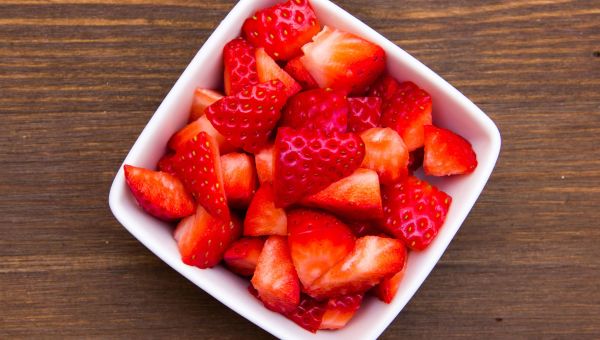
Prepped in-season fruit
“I buy any fruit that is in season or on sale, wash it, cut it up into bite-sized pieces and keep in the fridge,” says Deborrah Truex, RDN, with Medical Center of Aurora in Aurora, Colorado. “My favorites include strawberries, melons and mangos, and I find that, if they are ready to eat, the whole… Show More
“I buy any fruit that is in season or on sale, wash it, cut it up into bite-sized pieces and keep in the fridge,” says Deborrah Truex, RDN, with Medical Center of Aurora in Aurora, Colorado. “My favorites include strawberries, melons and mangos, and I find that, if they are ready to eat, the whole family can grab and snack on.”
Prepping this snack before your hunger hits is key. “We are more likely to go for what’s already cut, than a whole apple or orange sitting in the basket.”
Stocking up on in-season produce helps ensure you're feeding your family the ripest fruits and vegetables, at the best prices. Pineapple is sweetest in the winter, spring and fall, and spring and summer months are the best time to pick up plump strawberries.
Show Less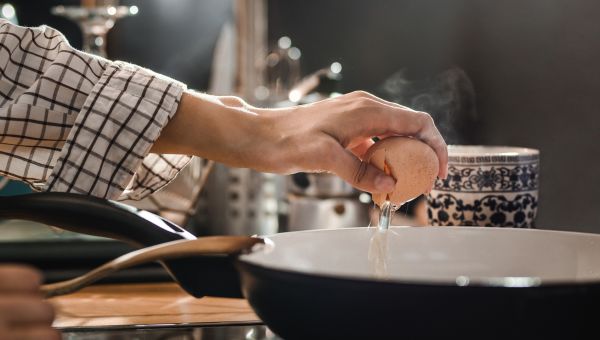
Eggs
“One food I always have in my fridge are organic free-range eggs. I start most of my mornings off with eggs. When I have the time, I love them cooked over-easy in coconut oil, or poached on top of steamed or sauteed vegetables. I prefer to keep the yolk soft to avoid damaging the fats in them,… Show More
“One food I always have in my fridge are organic free-range eggs. I start most of my mornings off with eggs. When I have the time, I love them cooked over-easy in coconut oil, or poached on top of steamed or sauteed vegetables. I prefer to keep the yolk soft to avoid damaging the fats in them, which can happen when we over-cook eggs,” says Lauren Hand, RDN, and licensed dietitian with HCA Midwest Health in Overland Park, Kansas.
“Eggs are a great source of protein in the mornings, which is important to help control your hunger and blood sugars all day long. Eggs are also rich sources of nutrients like choline, selenium, riboflavin and vitamin B12,” Hand adds.
They're versatile, too. Scramble with your favorite omelet veggies and top with a sprinkle of low-fat cheese or bake into convenient muffin cups, perfect to take on-the-go.
Show Less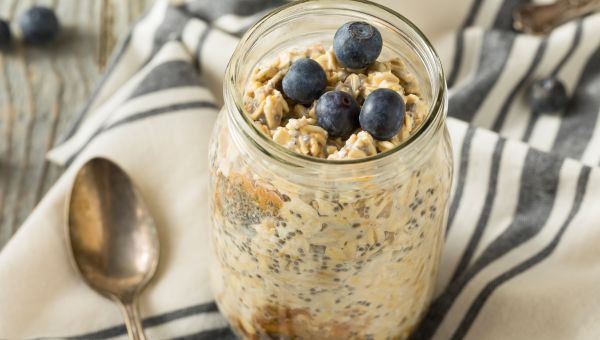
Overnight Oats
“I’m a registered dietitian, but I’m also a busy, working mom, so convenience matters,” says Tammy Baranowski, RDN, and licensed dietitian/nutritionist with Orange Park Medical Center in Orange Park, Florida.
“My favorite food to keep in my fridge is overnight oatmeal. I make mine with rolled oats,… Show More
“I’m a registered dietitian, but I’m also a busy, working mom, so convenience matters,” says Tammy Baranowski, RDN, and licensed dietitian/nutritionist with Orange Park Medical Center in Orange Park, Florida.
“My favorite food to keep in my fridge is overnight oatmeal. I make mine with rolled oats, ground flax, chia seeds, skim milk and fresh berries—just mix it in a mason jar before bed, and it’s ready to go in the morning!”
This recipe combines a number of breakfast essentials, like healthy fats, fresh produce and complex carbohydrates.
Show Less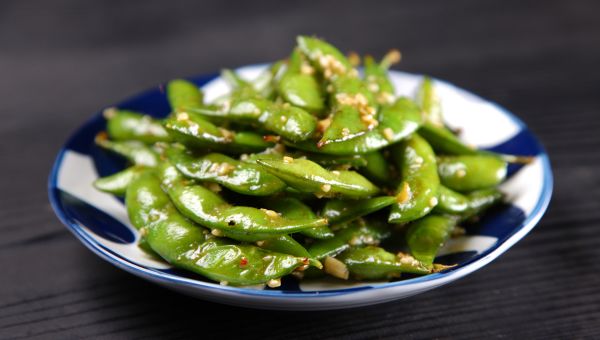
Edamame
"One food that you can always find in my freezer is edamame! It’s a yummy high protein legume that is very versatile and a great way for me to get some much needed iron during pregnancy,” says Jessie Fernandez, RD, with Corpus Christi Medical Center in Corpus Christi, Texas. “Adding just half a cup… Show More
"One food that you can always find in my freezer is edamame! It’s a yummy high protein legume that is very versatile and a great way for me to get some much needed iron during pregnancy,” says Jessie Fernandez, RD, with Corpus Christi Medical Center in Corpus Christi, Texas. “Adding just half a cup to your day can help boost overall daily fiber intake by 9 grams, and one serving contains just 120 calories.”
You can find two types of edamame in my freezer; shelled or unshelled (in pods), says Fernandez. “Both versions are pre-cooked, so all I have to do is thaw and eat! The unshelled pods are great to eat as a snack or finger food, and the shelled beans are easy to incorporate into various recipes.”
She loves to use them in soups, salads and even puree them to use in various dips. “My freezer just isn’t complete without them!”
Show Less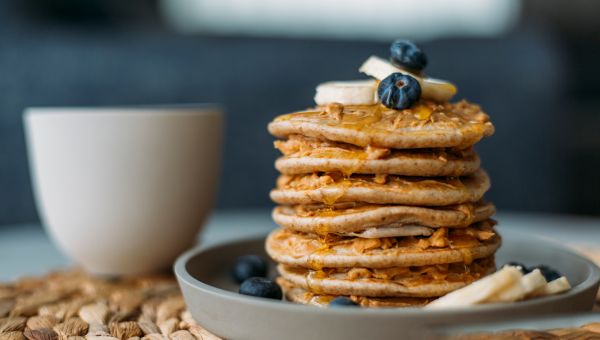
Healthy Pancake Ingredients
“I love when I have time in the morning to make a homemade breakfast. So, I always have bananas, oats, almond milk, ground flaxseed and farm fresh eggs. Oh! And natural peanut butter,” says Lauren Zimmerman, RD, with Summerville Medical Center in Charleston, South Carolina.
To prepare her pancakes,… Show More
“I love when I have time in the morning to make a homemade breakfast. So, I always have bananas, oats, almond milk, ground flaxseed and farm fresh eggs. Oh! And natural peanut butter,” says Lauren Zimmerman, RD, with Summerville Medical Center in Charleston, South Carolina.
To prepare her pancakes, Zimmerman mixes a few egg whites with a whole egg, mashes in a banana, throws in some oats and flaxseed, sprinkles in some cinnamon, splashes in some almond milk and then pours pancake-sized servings into a heated frying pan.
“I top my pancakes with sliced banana, a dollop of peanut butter and drizzle of honey. Well balanced, low in added sugar, complete in protein, whole grains and omega-3s, this breakfast keeps me full through half the day!”
Switch up the toppings to keep your taste buds happy. “I vary the toppings, but the base stays the same. Berries, vanilla yogurt, walnuts and pecans are also quite tasty on these pancakes,” says Zimmerman.
Show Less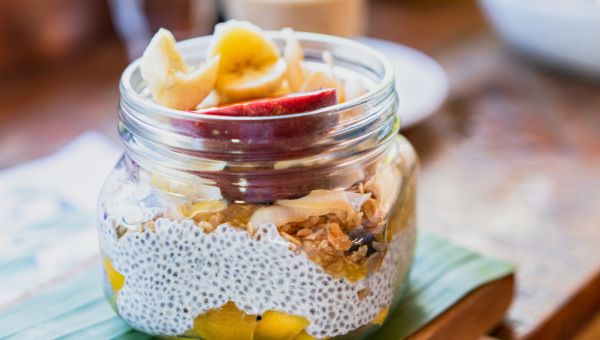
Chia Seeds
“The food I always have in my fridge is chia seeds because they are full of nutrition and health benefits,” says Nancy Olson, RD, with Englewood Community Hospital in Englewood, Florida. “I add chia seeds, whole or ground, to smoothies, salads, hot or cold cereals, yogurts and soups. They can also… Show More
“The food I always have in my fridge is chia seeds because they are full of nutrition and health benefits,” says Nancy Olson, RD, with Englewood Community Hospital in Englewood, Florida. “I add chia seeds, whole or ground, to smoothies, salads, hot or cold cereals, yogurts and soups. They can also be added to a liquid, like water or juice, and they will expand to form liquid gel to drink or add to other recipes. Chia seeds are a must-have for me!”
They're also great for whipping up a make-ahead dessert or breakfast. Just combine a few tablespoons of the seeds with almond milk in an airtight container and leave in the fridge overnight. You can top your pudding with a scoop of almond butter or fresh fruit, or both!
Show Less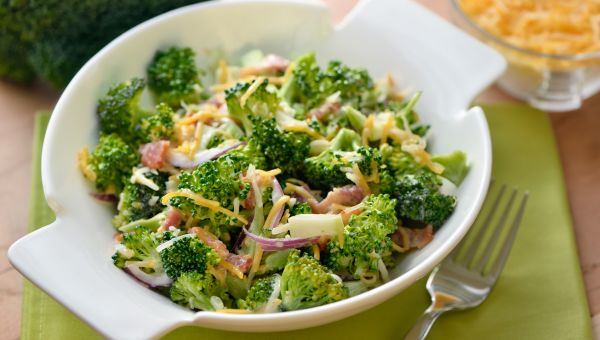
Fresh Veggies
“I try to keep a supply of fresh veggies like tomatoes, lettuce and cucumbers. I also like to have fresh fruits, like grapes,” says Naomi McKensie, RD, and licensed dietitian with Coliseum Health System in Macon, Georgia. “I do this so I can make sure I get my daily intake of fruits and veggies.… Show More
“I try to keep a supply of fresh veggies like tomatoes, lettuce and cucumbers. I also like to have fresh fruits, like grapes,” says Naomi McKensie, RD, and licensed dietitian with Coliseum Health System in Macon, Georgia. “I do this so I can make sure I get my daily intake of fruits and veggies. For dinner I regularly have a side salad using these veggies.”
Vary your veggies by season to keep your salad interesting. Stock your fridge with:
- Carrots and kale in the winter
- Celery and mushrooms in the spring
- Beets and tomatoes in the summer
- Broccoli and cabbage in the fall
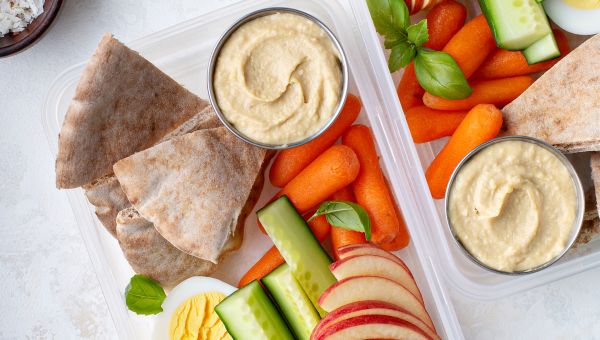
Healthy staples
“I always keep apples, grapes and a large container of hard-boiled eggs, so that the only thing I need to do when I wake up is cut my apple and peel my eggs. It is light and digestible first thing in the morning before I head out for my morning run,” says Amanda Erickson, RD, with Southern Hills… Show More
“I always keep apples, grapes and a large container of hard-boiled eggs, so that the only thing I need to do when I wake up is cut my apple and peel my eggs. It is light and digestible first thing in the morning before I head out for my morning run,” says Amanda Erickson, RD, with Southern Hills Medical Center in Nashville, Tennessee.
When hunger strikes, it can be tempting to reach for the most convenient options. Having wholesome ingredients prepped and ready helps make healthy choices a bit easier.
“Having hummus or bean dips around with sliced carrots and peppers makes it easy to reach for a healthy snack. I try as much as possible to prepare ahead of time. If it’s a busy week, we have frozen veggie burgers and veggies in the freezer for a fast, healthy meal!”
Show Less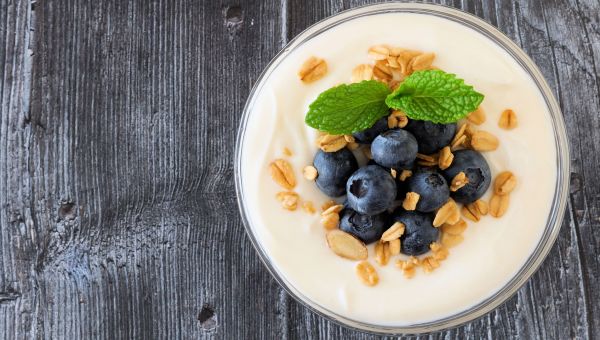
Plain Non-Fat Greek Yogurt
“Plain Greek yogurt is a very versatile food, and is full of great nutrition, like protein, calcium and probiotics,” says Patricia L Skolnik, RD, licensed dietitian and Certified Nutrition Support Clinician with Doctors Hospital of Augusta in Augusta, Georgia. “I use it in overnight oats—which is a… Show More
“Plain Greek yogurt is a very versatile food, and is full of great nutrition, like protein, calcium and probiotics,” says Patricia L Skolnik, RD, licensed dietitian and Certified Nutrition Support Clinician with Doctors Hospital of Augusta in Augusta, Georgia. “I use it in overnight oats—which is a favorite breakfast of mine. I also like to add something sweet to it and have it as a snack, like granola and a light drizzle of honey, or fresh fruit and a small handful of nuts or seeds. I also use plain yogurt as a substitute for sour cream for garnishing spicy foods.”
She's not the only one. “We use Greek yogurt in smoothies, as mayo or sour cream substitutes on top of baked potatoes, to make chicken, tuna or egg salad and on Mexican dishes,” says Lauri Watson, RD, with Summerville Medical Center in Charleston, South Carolina. “We also us it to make overnight oats, and popsicles with fresh fruit, milk and honey.”
Show Less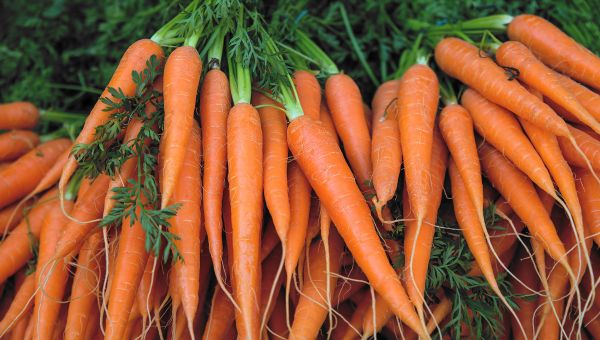
Carrots
“I always have carrots—these trusty, go-to vegetables will last forever,” says Smitha Suresh, RD, with Medical City McKinney in McKinney, Texas. “They’re crunchy, tasty and highly nutritious. One serving of carrots contains only 25 calories, making it a low-calorie snack with no fat. Carrots are a… Show More
“I always have carrots—these trusty, go-to vegetables will last forever,” says Smitha Suresh, RD, with Medical City McKinney in McKinney, Texas. “They’re crunchy, tasty and highly nutritious. One serving of carrots contains only 25 calories, making it a low-calorie snack with no fat. Carrots are a good source of beta-carotene, fiber, vitamin K, potassium and antioxidants.”
They're seriously powerful. “Studies suggest that increased intake of antioxidant-rich fruits and vegetables like carrots may reduce cancer and cardiovascular disease risks,” says Suresh.
“You can roast, steam or simply snack on them. I use carrots in many dishes, like pasta, noodles, stir fry, curry, rice and casseroles. I also enjoy them with hummus for a snack. You could roast them and eat them in place of potato fries. Adding them in soups, especially tomato soup, adds color and nutrition. It’s a very versatile vegetable and is a great staple in your fridge."
Show Less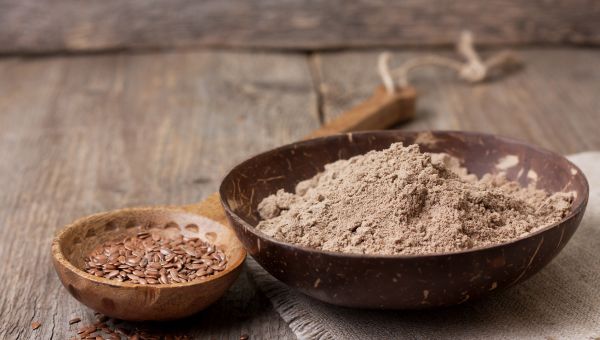
Ground Flax Seed
“Ground flax seeds are a good source of omega-3 fatty acids, which are good for heart and brain health; lignans, phytochemicals that help protect against some cancers; and fiber,” says Kathryn Friedman with Lourdes Health System in Camden, New Jersey.
“I add one or two tablespoons to oatmeal,… Show More
“Ground flax seeds are a good source of omega-3 fatty acids, which are good for heart and brain health; lignans, phytochemicals that help protect against some cancers; and fiber,” says Kathryn Friedman with Lourdes Health System in Camden, New Jersey.
“I add one or two tablespoons to oatmeal, smoothies, salads, yogurt, meatloaf and muffins. When mixed with water, ground flaxseeds can also replace eggs or butter in baking recipes.”
Show Less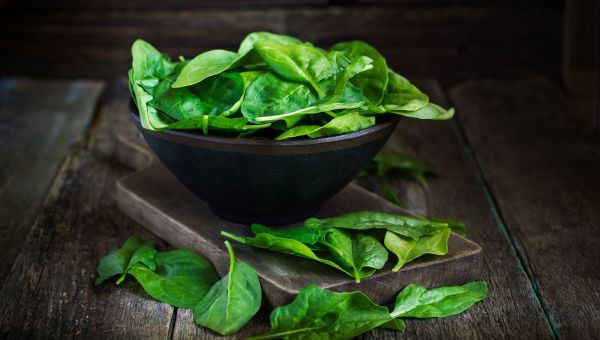
Pre-Washed Spinach
“The one thing I always have in the fridge is spinach,” says Tracy Kuzava, RDN, with Eastside Medical Center in Snellville, Georgia. “I either make a salad or use it in cooked dish.”
“If I choose to make a salad, I add other vegetables and a protein source, that’s usually a chicken breast cooked on… Show More
“The one thing I always have in the fridge is spinach,” says Tracy Kuzava, RDN, with Eastside Medical Center in Snellville, Georgia. “I either make a salad or use it in cooked dish.”
“If I choose to make a salad, I add other vegetables and a protein source, that’s usually a chicken breast cooked on my George Foreman grill. But, sometimes I use rotisserie chicken, picked up on way home. Occasionally, I use leftover steak as my protein source for the salad. I top my salad with 1 to 2 tablespoons of an oil-based dressing. My favorite is a homemade dressing with olive oil, garlic, pepper, lemon juice and Parmesan cheese.” Skipping the store-bought stuff helps eliminate loads of unhealthy calories, excess sodium and added sugars.
“If I want to use spinach in my cooking, I cut up some chicken breasts and saute in some butter with fresh-pressed garlic. I throw in a handful or two of spinach leaves and cook until wilted. Lastly, I add a half-cup of Parmesan cheese and mix until the cheese is well blended. The whole process takes about 15 minutes and dinner is complete!”
Fresh spinach is also a staple for Pam Helmlinger, RD, a licensed dietitian and certified diabetes educator with TriStar Centennial Center in Nashville, Tennessee.
“Purchasing pre-washed, preferably organic, greens—like spinach—is so convenient. I am more likely to use these, than a head of lettuce that I have to wash and chop myself,” she says.
“Spinach is great in salads and cooked dishes, like an omelet or as a dinner side with plenty of garlic. I add sliced almonds and crumbled goat cheese to give salads some extra crunch and flavor, before topping them with plenty of other veggies and balsamic vinegar.”
Show Less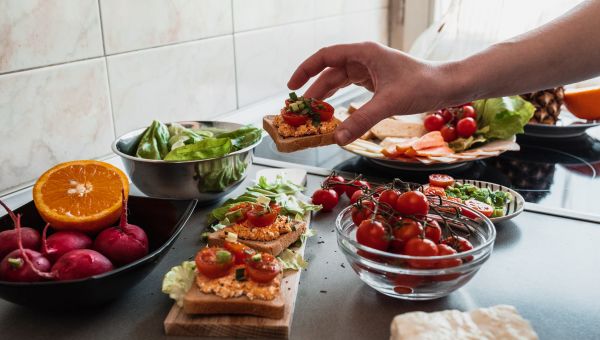
Makings of a healthy meal
“In my fridge you will consistently find nonfat dairy, eggs, grapes and berries, natural peanut butter, Greek yogurt, guacamole, hummus, low-fat cheese, low-sodium deli meat, whole grains bread and English muffin and a variety of veggies,” says Jessica Crandall, RD, with Presbyterian/St. Luke’s… Show More
“In my fridge you will consistently find nonfat dairy, eggs, grapes and berries, natural peanut butter, Greek yogurt, guacamole, hummus, low-fat cheese, low-sodium deli meat, whole grains bread and English muffin and a variety of veggies,” says Jessica Crandall, RD, with Presbyterian/St. Luke’s Medical Center in Denver, Colorado.
“This gives us a variety of options for healthy snacking and meals,” says Crandall. “One of my favorite healthy eats is Greek yogurt. I toss some berries and nuts on the top, and it makes a delicious healthy snack. I also like to grab cauliflower and dip it in hummus.”
Crandall also pairs protein and veggies together with some cheese to make an adult lunchable. “So often when we are busy, we forget the importance of protein- and fiber-rich foods,” says Crandall. However, most Americans aren’t meeting their fiber goals and are left feeling hungry before the next mealtime. “Protein is important for your muscles as well as metabolism, so shoot for 20 to 30 grams per meal to best support your body,” she adds.
Show LessMore On


video

article
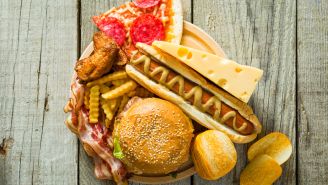
slideshow


video


video
